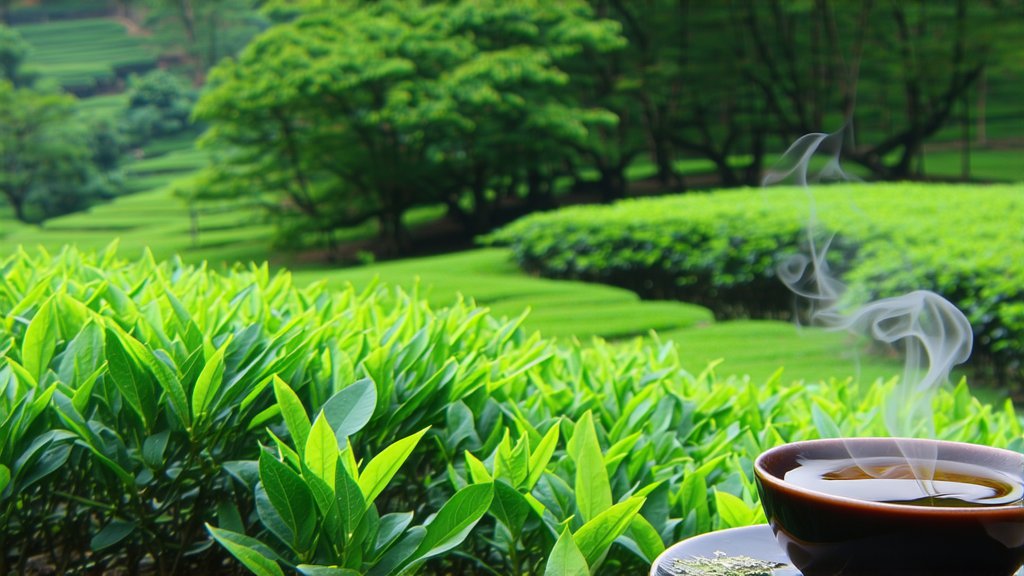
In the vast expanse of China's rich tea heritage, Keemun black tea stands as a testament to the country's long-standing tradition of tea cultivation and craftsmanship. Originating from the picturesque Huangshan Mountain region in Anhui Province, this exquisite variety has captivated tea enthusiasts worldwide with its distinctive flavor profile and unparalleled quality. Join us on a journey through the history, varieties, production process, and art of appreciating Keemun black tea – a true golden elixir that transcends time and borders.
A Historical Glimpse
The story of Keemun black tea traces back to the early Qing Dynasty (1644-1912), during which it gained prominence as one of China's most revered export commodities. Named after the ancient town of Qimen (now known as Keemun), this tea quickly became synonymous with excellence in the international tea market. Its popularity soared when it was introduced to the British Royal Court in the 19th century, earning a prestigious place among the world's finest teas.
Varieties of Keemun Black Tea
Keemun black tea encompasses several sub-varieties, each offering unique characteristics that cater to diverse palates. The two primary types are:
-
Qimen Hong Fen: Often referred to as "Keemun Hao Ya," this is the original and most celebrated variety. It features tightly rolled, dark brownish-black leaves with a hint of golden tips, exuding a sweet, fruity aroma reminiscent of peaches or apricots.
-
Gongfu Keemun: A more recent addition to the Keemun family, Gongfu Keemun undergoes a shorter oxidation period, resulting in a lighter color and a fresher, more vibrant taste profile. This variant showcases floral undertones and a smoother texture compared to its predecessor.
The Art of Crafting Keemun Black Tea
The meticulous production process of Keemun black tea is a harmonious blend of tradition and innovation. Here's an overview of the key stages involved:
-
Withering: Freshly plucked tea leaves are spread out in a well-ventilated area to lose moisture and become more pliable for rolling. This step also initiates the enzymatic reactions crucial for flavor development.
-
Rolling: The withered leaves are then meticulously rolled using traditional bamboo rollers or modern machinery. Rolling helps release the essential oils within the leaves, further intensifying their aroma.
-
Oxidation: Once rolled, the leaves are left to oxidize (also known as fermentation) under controlled conditions. This process transforms the green leaves into their characteristic dark hue while developing complex flavors and aromas. For Keemun, this stage typically lasts between 2-3 hours.
-
Fixation: To halt oxidation, the leaves are exposed to high heat, either through pan-firing or steaming. Fixation stabilizes the flavors and prepares the leaves for drying.
-
Drying: Finally, the fixed leaves are gently dried to remove any remaining moisture, ensuring they can be stored without spoilage. This step also refines the tea's overall flavor profile.
Savoring the Golden Elixir: Tasting Keemun Black Tea
To truly appreciate the nuances of Keemun black tea, one must engage in the ritualistic practice of Gongfu Cha, a traditional Chinese method of tea brewing. Here's how to embark on this sensory adventure:
-
Preparation: Begin by warming your teapot and cups with hot water to enhance the tea's aroma. Discard this initial rinse water before proceeding.
-
Measurement: Use approximately 3 grams of Keemun black tea per 150ml of water. Adjust according to personal preference for stronger or milder brews.
-
Water Temperature: Boil water to around 90-95°C (195-205°F). Slightly cooler than boiling point ensures optimal extraction without scorching the delicate leaves.
-
Steeping Time: Infuse the tea for about 2-3 minutes for the first infusion, allowing the flavors to fully unfold. Subsequent infusions can be extended gradually.
-
Observation & Aroma: As the leaves unfurl gracefully in the pot, observe their transformation and inhale the enticing aroma wafting from the brew.
-
Tasting: Sip slowly, savoring the initial sweetness followed by subtle notes of tartness and a lingering aftertaste that dances across the palate. Each infusion reveals new dimensions of flavor, making Keemun black tea a journey rather than just a beverage.
In conclusion, Keemun black tea represents not only a remarkable achievement in tea cultivation and processing but also a profound cultural symbol deeply rooted in Chinese history and tradition. Its rich legacy continues to inspire tea lovers globally, inviting them to partake in this age-old practice of mindfulness and appreciation for nature's bounty. Whether enjoyed as a moment of solitude or shared among friends, Keemun black tea offers an unforgettable experience that transcends time and space, connecting us all through the universal language of tea.